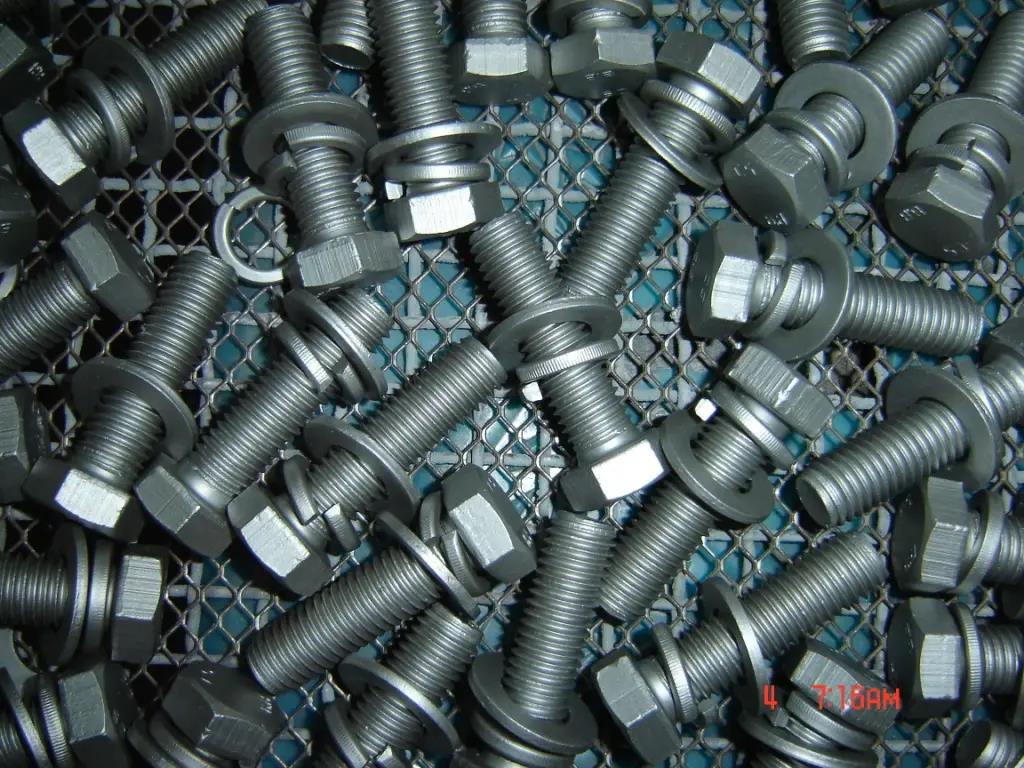In our industrial production, bolts often break, so why do bolts break? Today, it is mainly analyzed from four aspects.
In fact, most bolt breaks are due to looseness, and they are broken due to looseness. Because the situation of bolt loosening and breaking is roughly the same as that of fatigue fracture, in the end, we can always find the reason from the fatigue strength. In fact, the fatigue strength is so great that we can’t imagine it, and bolts don’t need fatigue strength at all during use.
First, bolt fracture is not due to the tensile strength of the bolt:
Take an M20×80 grade 8.8 high-strength bolt as an example. Its weight is only 0.2kg, while its minimum tensile load is 20t, which is as high as 100,000 times its own weight. In general, we only use it to fasten 20kg parts and only use one thousandth of its maximum capacity. Even under the action of other forces in the equipment, it is impossible to break through a thousand times of the weight of the components, so the tensile strength of the threaded fastener is sufficient, and it is impossible for the bolt to be damaged due to insufficient strength.
Second, the bolt fracture is not due to the fatigue strength of the bolt:
The fastener can be loosened only one hundred times in the transverse vibration loosening experiment, but it needs to vibrate one million times repeatedly in the fatigue strength experiment. In other words, the threaded fastener loosens when it uses one ten thousandth of its fatigue strength, and we only use one ten thousandth of its large capacity, so the loosening of the threaded fastener is not due to the fatigue strength of the bolt.
Third, the real reason for the damage of threaded fasteners is looseness:
After the fastener is loosened, huge kinetic energy mv2 is generated, which directly acts on the fastener and equipment, causing the fastener to be damaged. After the fastener is damaged, the equipment can’t work in the normal state, which further leads to the equipment damage.
The screw thread of the fastener subjected to axial force is destroyed and the bolt is pulled off.
For fasteners subjected to radial force, the bolt is sheared and the bolt hole is oval.
Four, choose the thread locking method with excellent locking effect is the fundamental to solve the problem:
Take hydraulic hammer as an example. The weight of GT80 hydraulic hammer is 1.663 tons, and its side bolts are 7 sets of M42 bolts of class 10.9. The tensile force of each bolt is 110 tons, and the pretightening force is calculated as half of the tensile force, and the pretightening force is as high as three or four hundred tons. However, the bolt will break, and now it is ready to be changed to M48 bolt. The fundamental reason is that bolt locking can’t solve it.
When a bolt breaks, people can easily conclude that its strength is not enough, so most of them adopt the method of increasing the strength grade of bolt diameter. This method can increase the pre-tightening force of bolts, and its friction force has also been increased. Of course, the anti-loosening effect can also be improved. However, this method is actually a non-professional method, with too much investment and too little profit.
In short, the bolt is: “If you don’t loosen it, it will break.”
Post time: Nov-29-2022

